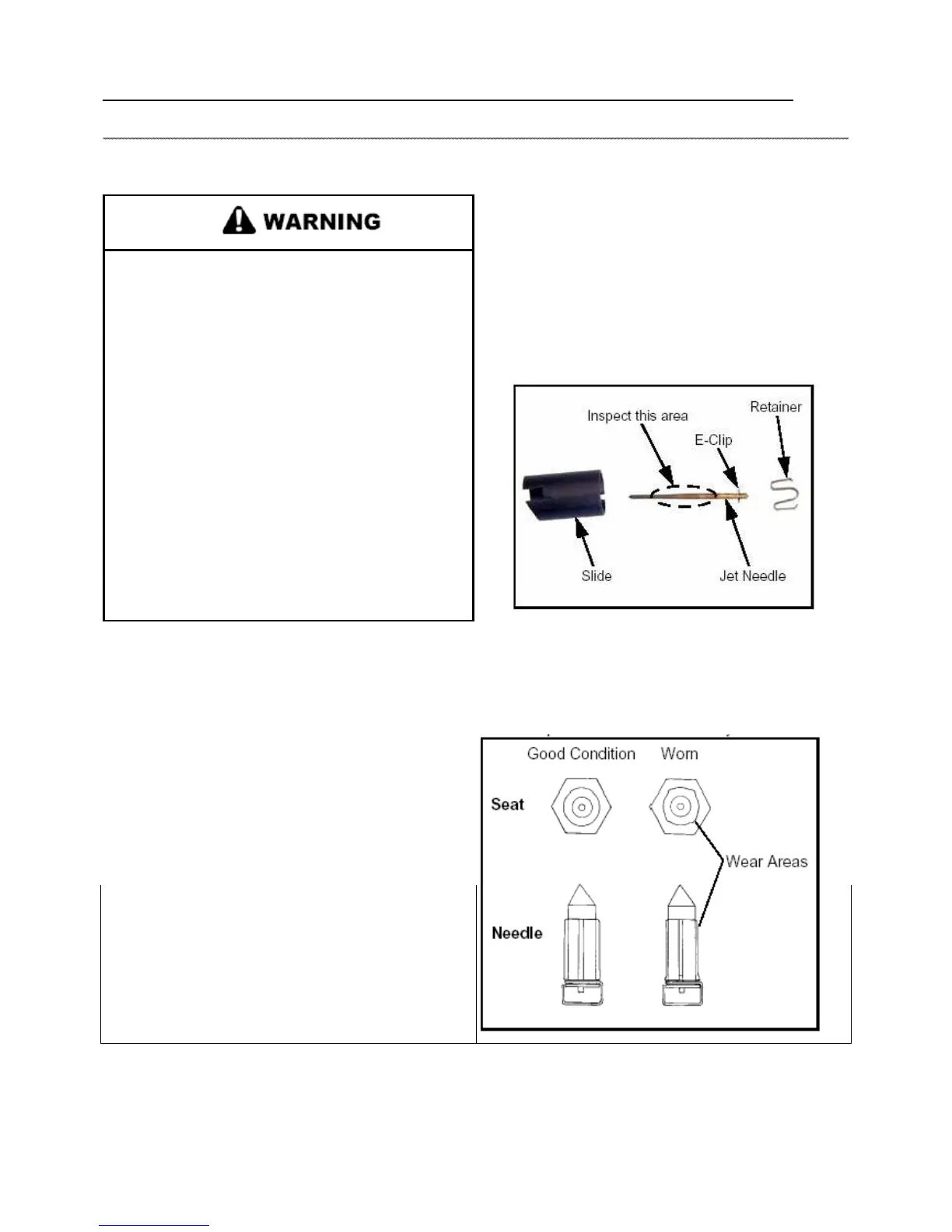5.11
FUEL SYSTEM
Carburetor Cleaning
Protect eyes from contact with cleaner. Take
safety measures during these procedures. Safety
glasses and chemical resistant gloves are required.
Should you get cleaner in your eyes or if you swallow
cleaner, seek medical attention immediately.
Carburetor cleaners can be extremely caustic.
Extended periods of soaking can loosen the adhesive
sealer on the passage drill-way plugs.
Do not soak rubber or plastic components or O-rings in
caustic cleaning solutions. Irreparable damage may
occur. Do not use agitator-type carburetor cleaning
equipment.
Rubber parts must be cleaned with mild detergent and
hot water only.
Carburetor Inspection
1. Remove the carburetor slide assembly. Disassemble the
components and inspect for wear. Inspect slide needle and
for discoloration, shiny spots, or an area that looks different
than the rest of the needle. The middle to upper portion of the
needle contacts the needle jet and is the most likely wear point.
If slide needle shows signs of wear replace both the needle and
needle jet to prevent a rich condition.
1. Thoroughly clean the carburetor body, jets, and all passages
with carburetor cleaner or electrical contact cleaner.
2. If the carburetor is extremely dirty or contaminated with
residue and varnish, soak for short periods only in carburetor
cleaner, and rinse in hot water.
3. Replace the jets if they have a buildup of fuel residue or
bacterial growth that cannot be removed. Even a small amount
of residue will reduce the flow characteristics of the jet.
4. Verify all passages and jets are unobstructed by spraying
electrical contact cleaner through the passages.
2. Inspect the inlet needle tapered surface for any sign of wear
or damage. Be sure the spring loaded pin is free moving and
returns freely when pushed. The inlet needle and seat should
be pressure tested after assembly.
IMPORTANT: Do not use wire or welding tip cleaners
as the orifice size may be altered.
5. Use low pressure air to dry carburetor body and all
components.
